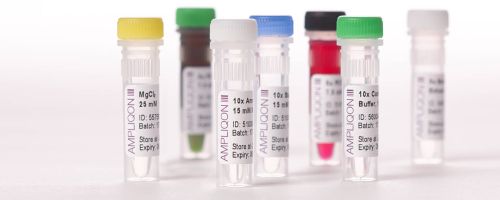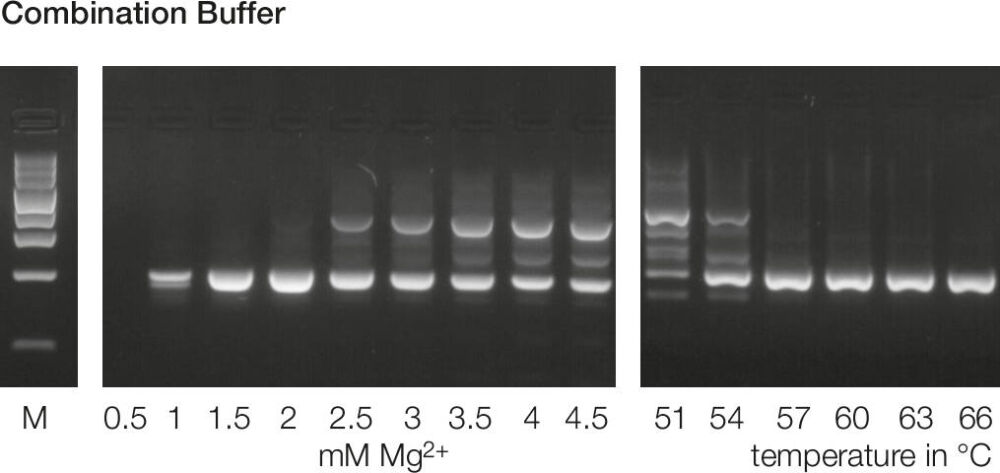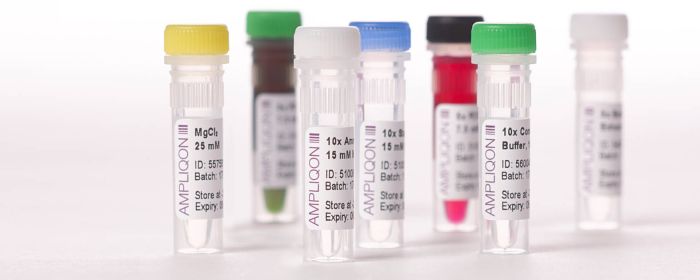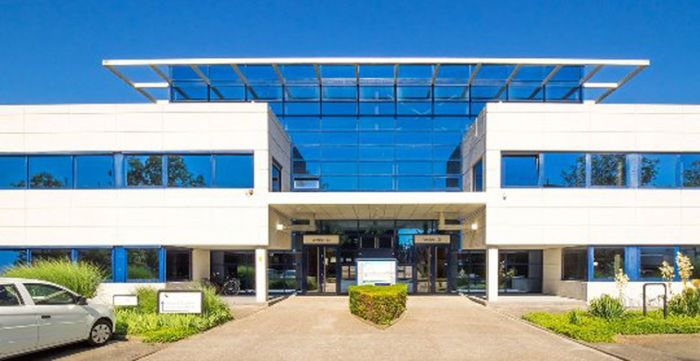PCR Buffers system
Do you want to get more reliable results? It is known that multiple factors play an important such as the quality of the DNA and the quality of the instrument itself. Therefore, choosing the right PCR buffers is essential for creating an optimal environment when performing PCR.
We offer you several Tris-based solutions that may match your desired PCR assay conditions and applications. The PCR buffers are available in different compositions, and with different components. For instance, we offer buffers with and without Mg2+, Tween 20 or Triton X-100.
All the PCR buffers are available in 4 options: 15 mM MgCl2, Mg2+ free, Tween free and Mg2+ & Tween free
TIP – Choose the right buffer

The PCR Ammonium buffer includes high yield expectation and a minimal optimisation is needed regarding annealing temperatures or Mg2+ concentrations. For these reasons, from all the PCR buffers we recommend to use ammonium buffer for most PCR applications. Specifically:
- Use Mg2+ free buffer for the optimization of your PCR protocol, especially if Mg2+ concentrations lower than 1.5 mM are required in your set-up.
- Use of detergent free buffers if fluorescent spectrometry is involved in automation and downstream applications.





